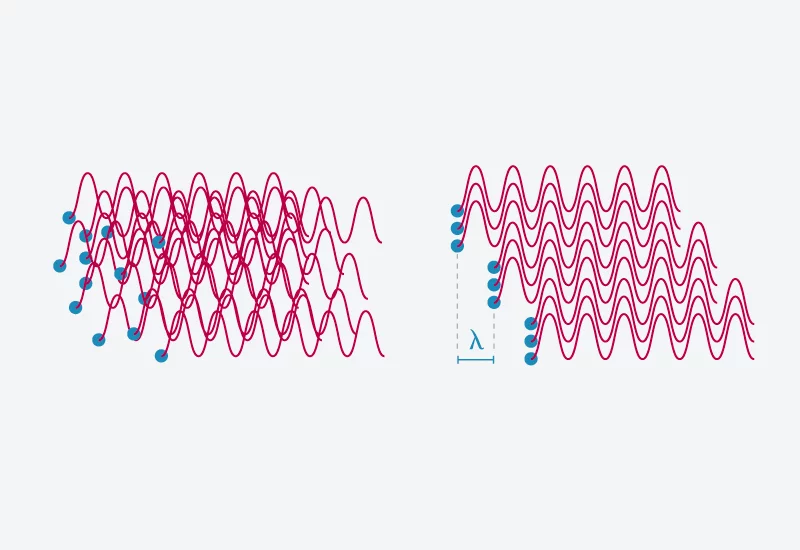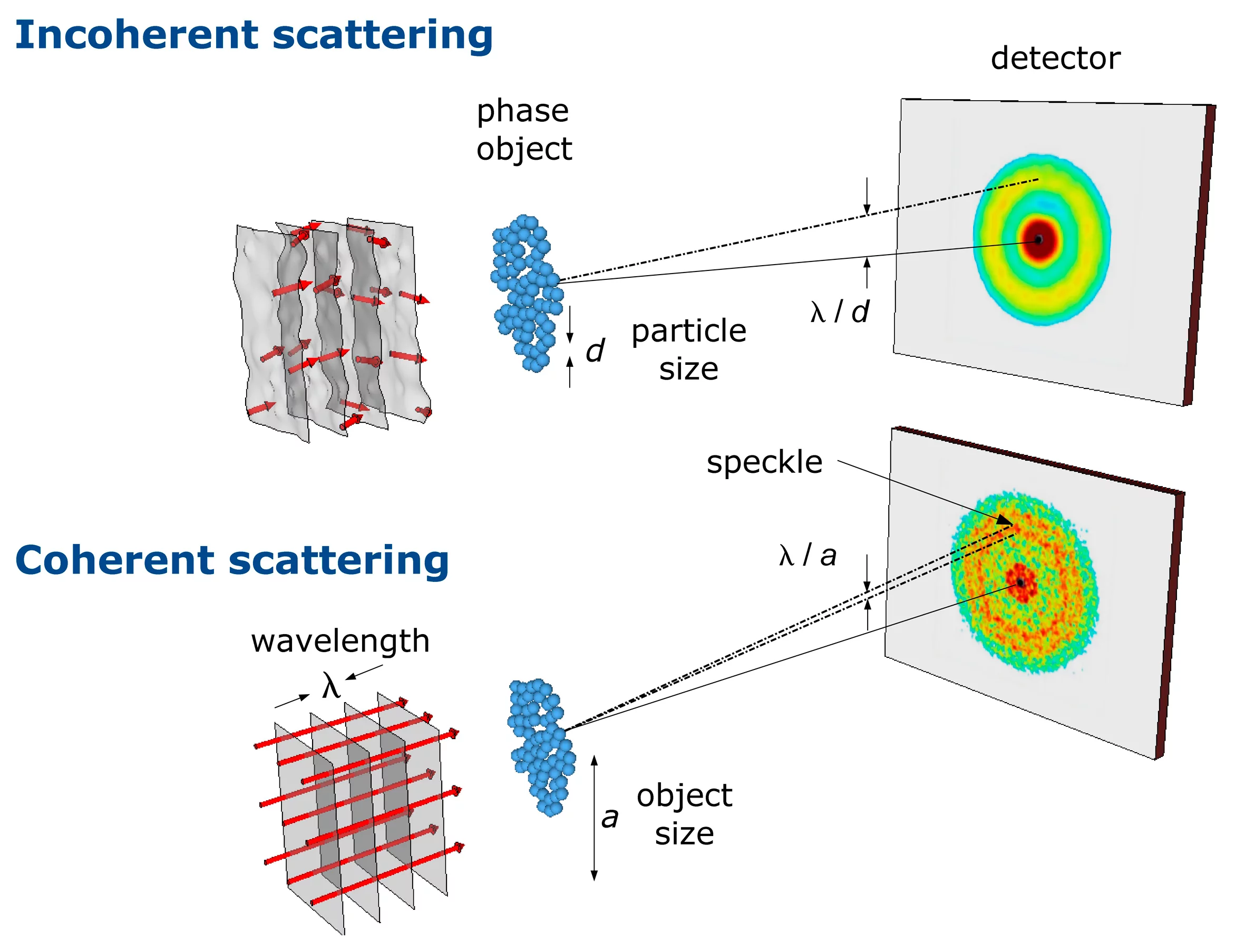SwissFEL will produce very short, intense pulses of X-ray light with laser-like characteristics. These characteristics will make it possible to elucidate the exact structure of molecules, for which only a fuzzy picture, at best, can be obtained using "normal" light.
SwissFEL will produce very short and highly intense pulses of X-ray light with laser-like properties, and thus afford new insights into the interiors of a wide variety of materials. The characteristics of this "SwissFEL light" will significantly expand the experimental capabilities at this facility.
Light is made up of waves. In a normal light bulb, different points along the filament emit light independently of each other. Because of this, the crest of a wave emitted from one point on the filament often meets the trough of a wave emitted from another point, and the waves partially attenuate each other. This does not happen with a laser, since all of the light waves are emitted "in phase", so that the crests of all waves coincide, as do all the troughs. This so-called ‘coherent radiation’ makes the light produced particularly intense, because none of the different light components cancel each other out. Many experiments can thus be performed more efficiently with laser light –particularly scattering experiments, which are used to determine molecular structures.
In studies at SwissFEL scientists will illuminate samples with X-ray light, which will be deflected when it hits the building blocks making up the molecule. Light waves coming from different directions will overlap behind the sample. The structure of the object being investigated will be determined by analysing the resulting interference pattern. The interference pattern obtained with laser light clearly reflects details about the object being studied that are blurred with "normal" light. For this reason, laser light can be used to determine the structure of very small samples, for which other light sources generate, at best, a very fuzzy picture.


